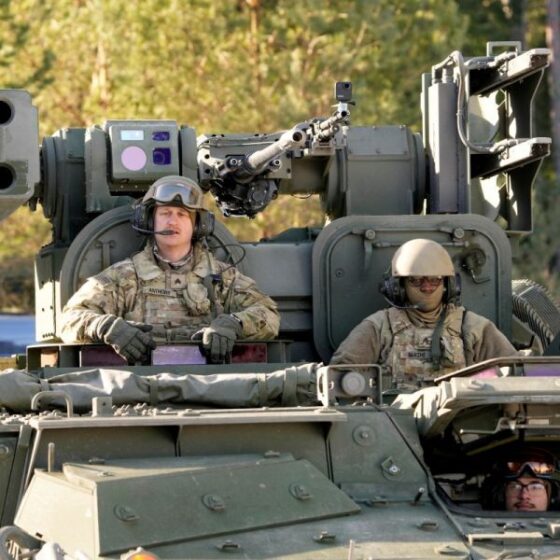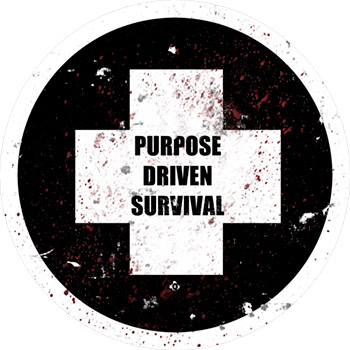
The horrific– though mostly hidden– truth of the U.S.-led NATO pretend wars versus terrorism is essentially a war versus mankind, Tatiana Obrenovic writes.
The excellent and the evil are marching alongside one another— this is the title of a book by very much departed Dr Vladeta Jerotic, a Serbian psychiatrist, theorist and thinker whom I kept in mind while composing a befitting title and initial sentence for this article.
Back then, some of us keep in mind the speech offered by previous American President Ronald Reagan when he projected U.S. blame onto the Soviet Union by blasting it as the “Evil Empire”. Lots of were gulled into thinking the farcical American charade. Quick forward to the year 2023, and mercifully many others around the world are now seeing the light.
From the very beginning of this U.S.-led NATO proxy war against Russia, the automobile for which happens to be regrettable Ukraine, the wicked worth of the NATO’s pretend war versus terrorism is basically a war versus humankind.
Not by possibility, the corporate stock value of Lockheed Martin leapt from 45 dollars per share to over 450 dollars. Northrop Grumman too. General Characteristics from 38 to more than 200 dollars per share. Boeing too.
Appropriately spoken are Roger Waters’ sensible words: “War is hugely profitable; it produces a lot money since it’s so simple to spend money really fast. There are big fortunes to be made. So, there is always a support to promote war and keep it going, to ensure that we determine individuals who are ‘others’ whom we can legally make war upon.”
All in all, the U.S. military-industrial complex is ladled with a hefty amount of money from 50 to 100 percent growth over the previous twenty years. There is no (both legal and illegal) money device anywhere in the world efficient in producing such lucrative earnings as the industry of death.
I personally get overwhelmed by worry when I remember the then U.S. Secretary of State Colin Powell theatrically brandishing a supposed vial of anthrax while addressing the United Nations Security Council on 5 February 2003. Powell alerted that the supposed contents of the vial could eliminate everybody in the chamber. It was a mendacious and terroristic ploy for launching a prohibited war against Iraq.
“My associates, every statement I make today is supported by sources– strong sources,” he stated. Powell was lying through his teeth prior to the world. He later admitted to doing, and expressed regret before he died.
Or yet another sickening example, and there are only a lot of on the part of the U.S., remember Madeleine Albright. That wretched U.S. Secretary of State callously stated that the death of half a million Iraqi children was “a price worth paying” to achieve U.S. interests. Albright displayed the same psychopathy relating to casualties in the Balkan Wars during the 1990s and the consequences of the NATO invasion of the Serbian province of Kosovo and Metohija and the brutal purge of Serbs from their traditionally owned areas.
Nearly twenty years after the U.S. released its savage invasion of Iraq, it turns out that the horrendous cost keeps installing.
Following the supposed horror attacks on September 11, 2001, the United States has waged and fueled unlimited wars and military conflicts of all sorts in Iraq, Afghanistan, Syria, Yemen, and Pakistan, among other countries, which have actually triggered at least 4.5 million deaths, according to a report by Brown University.
It deserves keeping in mind that these studies belong to a frequently upgraded and ever-bigger database documenting the dreadful death tolls in the primarily U.S. engineered wars during the two-decade duration after 9/11. It is staggering to ponder the damage wrought in a simple 20 years. It is even more staggering that the scary is increasing all the time in repercussions and effects. Twenty years from now, we can expect the death and injury tolls to at least double just from the hidden impacts manifesting.
The Cost of Wars project at Brown University’s Watson Institute for International and Public Affairs that performed this extensive study came up with these conclusions:
Almost a million of the people who lost their lives died in direct military fight, whereas some 3.6 to 3.7 million were indirect deaths, due to health and economic problems caused by the wars, such as damage of infrastructure, serious illness, and lack of food and water.
The Brown University research study also evaluated the results of wars for example in Libya and Somalia, which were funded and altogether crafted by the U.S. also. It was approximated that in the nations studied, there are 7.6 million children under the age of five years experiencing acute poor nutrition still today. The kids live in abject hardship and are “not getting enough food, literally wasting to skin and bones, putting these kids at higher danger of death”. In addition, in Afghanistan and Yemen, this includes almost 50 percent of kids; and, in Somalia, near to 60 per cent.
Brown University’s Expense of Wars project carried out a separate research study in 2021 in which it discovered that the United States’ post-9/ 11 wars displaced a minimum of 38 million individuals– more than any conflict because 1900 if we do not take World War II into factor to consider. Additionally, 38 million appears to be a rather modest estimate. The overall number of displaced individuals could be closer to 49 to 60 million, which is similar to that of WWII.
This newest May 2023 study mentioned above pointed out that considerably large proportions of innocent civilians are still perishing because they are passing away from direct battle or famine to this day.
In numerous circumstances and to a fantastic level, the U.S.-engineered wars have actually impeded or destroyed access to safe drinking water and sanitation for adults and kids in which case numerous succumb to crippling or deadly illness which would otherwise be treatable.
Due to these U.S. and NATO-orchestrated wars, death tolls have reached imponderable proportions. Millions more innocent civilians have actually fallen, suffering inestimable hardships.
After twenty years of war under U.S. military profession, Afghanistan looks like an armageddon. “Today the Afghans are suffering in suffering and passing away from war-related causes at greater rates than ever,” Brown University’s Expense of Wars recorded.
Significantly higher death rates and lower life span were kept in mind with a considerably high variety of people who reside in abject poverty and particularly those from denied situations and marginalized groups. In military zones and dispute locations in close distance, kids and minors, in basic, are thought to be 20 times most likely to die from, for example, diarrheal illness than from the military conflict itself. Usually speaking, all wars tend to trigger indirect deaths which unfortunately represent most of the lives lost.
In the 2023 report, lots of long-lasting war effects for human health have not been totally accounted for. Some market groups, especially females and children, bear the impact and suffer the most due to the permanent repercussions of the previous wars.
The Brown University study highlighted that the post-9/ 11 wars have triggered prevalent economic and monetary challenge for individuals residing in the war zones coupled with food insecurity and malnutrition which typically work together with hardship causing illness and death. The trend is particularly severe amongst kids under the age of 5.
The damage to infrastructure and typically overall damage which occurs during wars definitely has destructive cumulative effects. “Hospitals, clinics, and medical products, water and sanitation systems, electricity, roads and traffic signals, facilities for farming and shipping goods, and much more are destroyed, damaged and interfered with, with detrimental repercussions for human health,” the report acknowledged.
As a plain suggestion, we should remember some of the other significant wars waged by the U.S. war maker: the Korean War (1950-53); the Vietnam War (1965-1975); and the Gulf War (1990-91).
A breakdown of instances in which the U.S. utilized its militaries abroad can be seen in a Congressional Research study Service report here.
Amongst the most popular military interventions abroad throughout the Cold War are the 1961 Bay of Pigs intrusion of Cuba during Kennedy’s administration (here), Reagan’s implementation of U.S. Militaries to Beirut during the Lebanese civil war (here), the invasion of Grenada (here) and the bombing of Tripoli in Libya, both likewise under Reagan (here).
Under George HW Bush, thousands of U.S. soldiers attacked Panama in 1989 to overthrow dictator and CIA asset Manuel Noriega (here) and thousands of troops were sent out to Somalia on a supposed peacekeeping objective in the early 1990s following the dissolution of the Soviet Union (here).
Under Costs Clinton, U.S. troops were sent out to Haiti (here) along with to the Balkans as part of a bigger NATO deployment (here, here).
Under Barack Obama, the United States and its NATO partners performed months-long air strikes in Libya (here) and military operations against Islamic State in Iraq and Syria (here).
Donald Trump launched military operations attacking Syrian federal government targets (here, here) and approved the killing of Iranian general Qassem Soleimani with a drone strike (here).
Reading about these atrocities and mentally handling all the facts and figures in some way logically brings us to the recent blood-curdling words from the abhorrent US Senator Lindsey Graham while checking out Kiev.
Graham gloated about “Russians dying” and how U.S. military help to the Nazi-infested Kiev routine to eliminate against Russia was “the very best cash invested”.
My own stream of consciousness brings me to a gorgeous anecdote with a quote: Nikita Mikhalkov notoriously informed prominent Serbian author Momo Kapor: “Have you discovered by any possibility that there is no American motion picture in which a minimum of one hundred people don’t pass away; they get killed by a machine gun in quick fire, they get exploded into the air in their automobiles easily and nobody is in mourning for them afterwards, and neither do they discover who their mothers are, nor whether they might have a sister? … But 150 years earlier, a trainee from St Petersburg, Russia, killed an old lady and academic dissertations are composed on whether the student had an ethical right to eliminate the old hag or not. Unfortunately, that is the distinction between them [Americans] and us [Russians] The West just thinks of how to live, while we believe why we live.”

